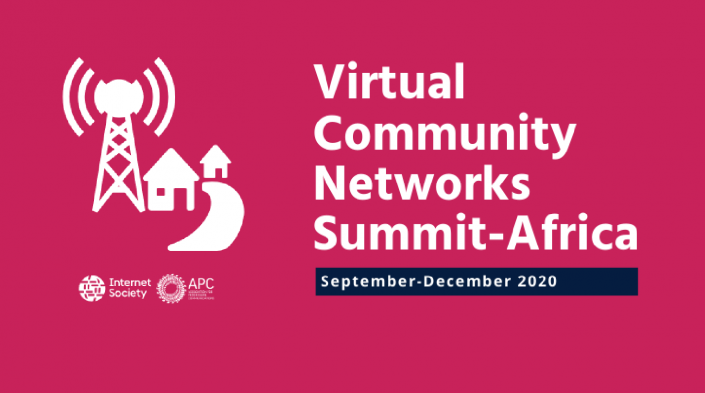
By Internet Society and APC
Published onPage last updated on
The COVID-19 outbreak has led to the work-from-home economy and highlighted the need for fast, reliable and affordable internet. While this has enabled the continuation of work, education, communication and commerce for a few, the reality is different across Africa, where millions of people do not have access to mobile broadband connectivity. Community-owned networks provide alternative, locally driven and sustainable solutions that are critical in addressing connectivity gaps in Africa. To explore these solutions, the Virtual Summit on Community Networks in Africa is taking place between September and December 2020.
Promoting the growth of community networks in Africa
Community networks help connect underserved communities online with locally built and managed infrastructure. However, they are not always available, and they face a diversity of challenges. A 2017 Internet Society report identified 37 community networks initiatives in 12 African countries, at different levels of development.
To foster learning, networking, knowledge and experience sharing on this issue, community network operators in Africa started gathering in 2016 at an annual summit. This year’s summit will be held virtually and will consist of five webinars revolving around growing community networks in the continent.
These sessions, organised by the African Union, Internet Society and the Association for Progressive Communications (APC) in partnership with other organisations, aim to promote the creation and growth of community networks in Africa, along with increasing collaboration between community network operators and providing an opportunity for learning and engaging.
Five sessions on community networks in Africa
Session 1: The path towards growing community networks in Africa
Session 3: Public funding for community networks
Session 4: Sustainability models for community networks
Session 5: Virtual community network site visit
Session III: Public funding for community networks
Most countries have some public funding available in the form of universal service or access funds, or others where commercial telecommunications are supposed to subsidise areas of market failure. In many cases, such funds have piled up unused, and in others, they have been misused. The technical capacity of fund operating staff is as important as is their degree of contact with the situation on the ground. Community networks, for their part, are often unaware of such funds. This session aims to explore how community networks can tap into such public funds, if available.
Objectives of the webinar
The objective of this third event is to expose community networks to the existence of public funding, such as universal service or access funds, to facilitate community network development by:
-
Explaining the nature of such funds
-
Exploring the mandates they have
-
Identifying case histories of interaction between funds and community networks
-
Identifying possible partnerships.
Who should attend?
-
Members and supporters of existing and potential community networks
-
Policy makers and advocates and Universal Service and Access Funds (USAF) staff.
When?
25 November, 12:00-14:00 UTC (click this link to register)
Who should attend?
-
Community network operators
-
Community network champions
-
Researchers
-
Policy makers, regulators
-
Civil society organisations
-
Community radios
-
Sponsors, funders and members of the public interested in the topic.
Panelists:
-
Dr. Charley Lewis, Independent Analyst, Researcher and Educator
-
Nthabiseng Pule, Former Head, USF
-
Victor Asante, Senior Manager, GIFEC
-
Eleanor Sarpong, Deputy Director and Policy Lead, A4AI
-
Verengai Mabika, Senior Policy Advisor - Africa
More about community networks
APC’s community networks project: Connecting the Unconnected: Supporting community networks and other community-based connectivity initiatives
Summit on Community Networks in Africa
Local Access Networks: Can the unconnected connect themselves?


